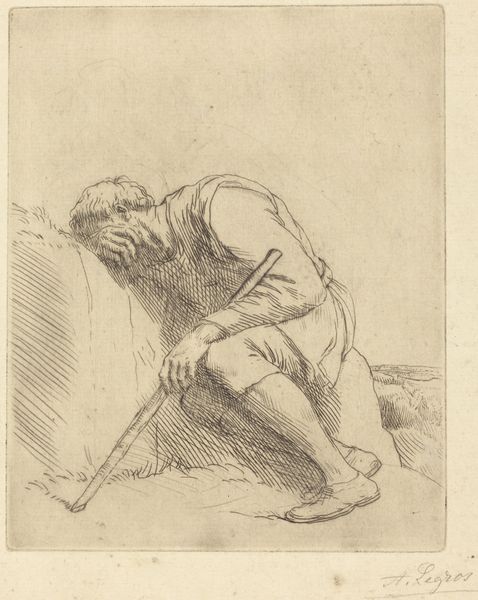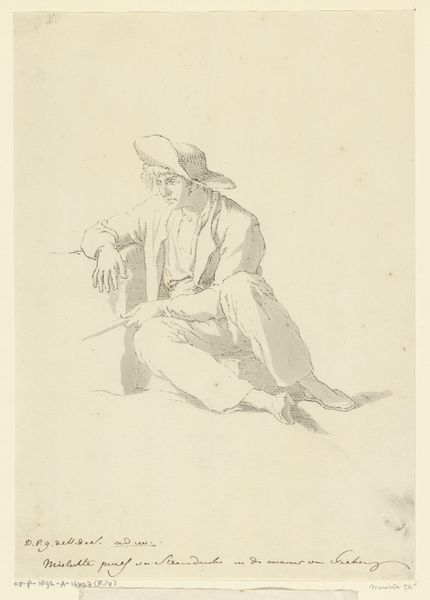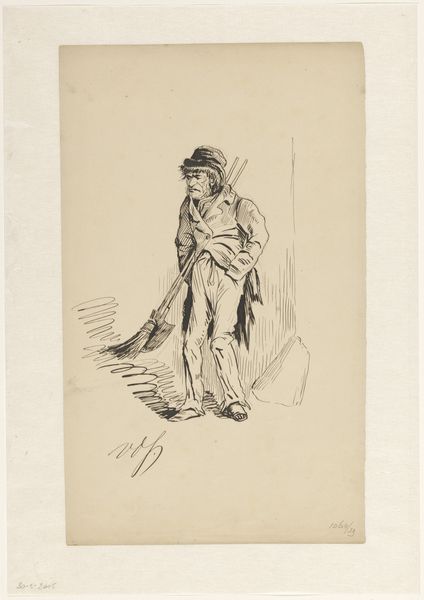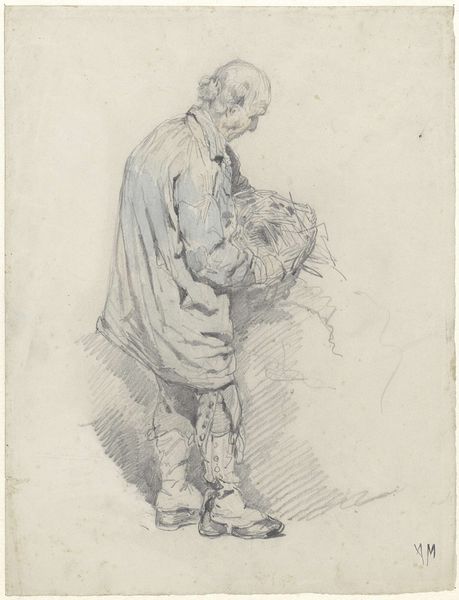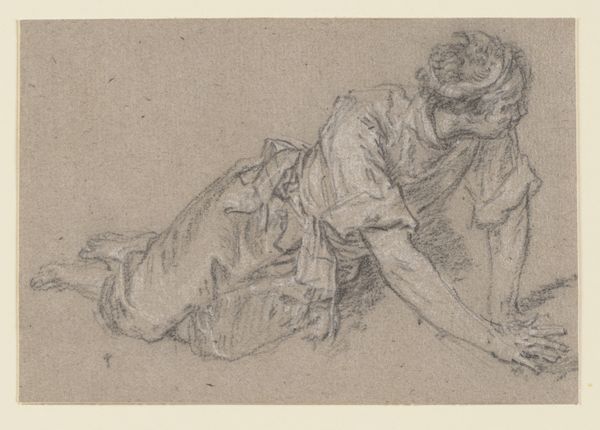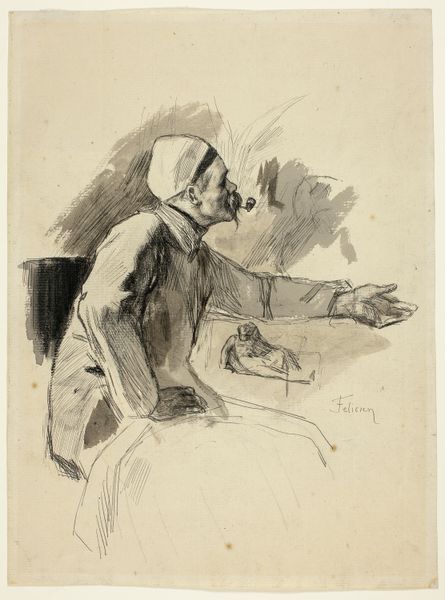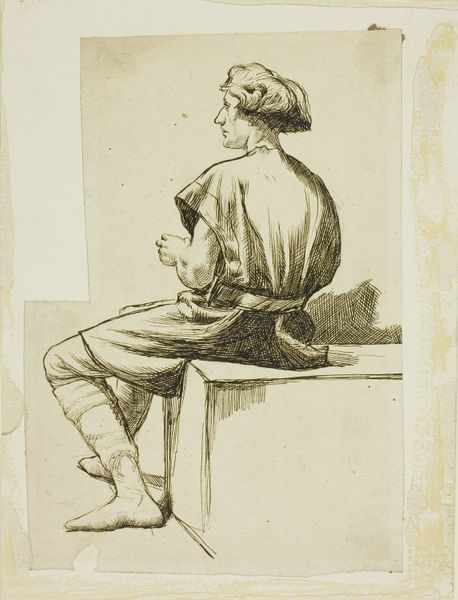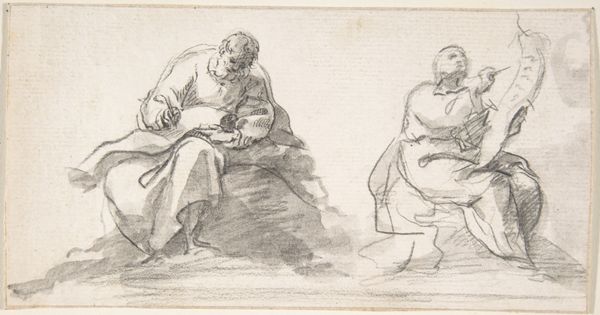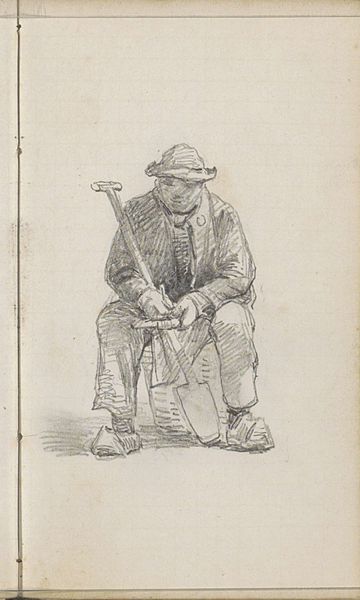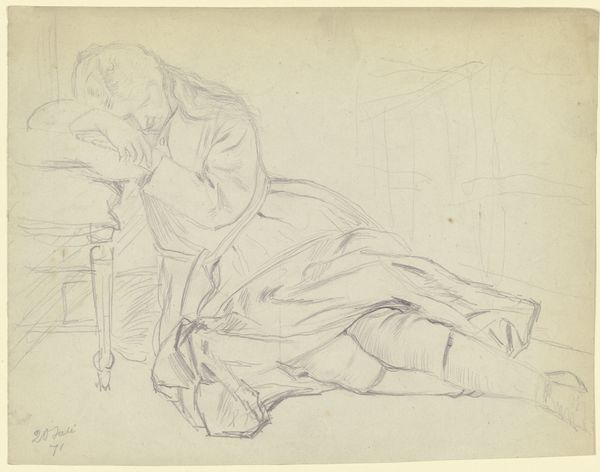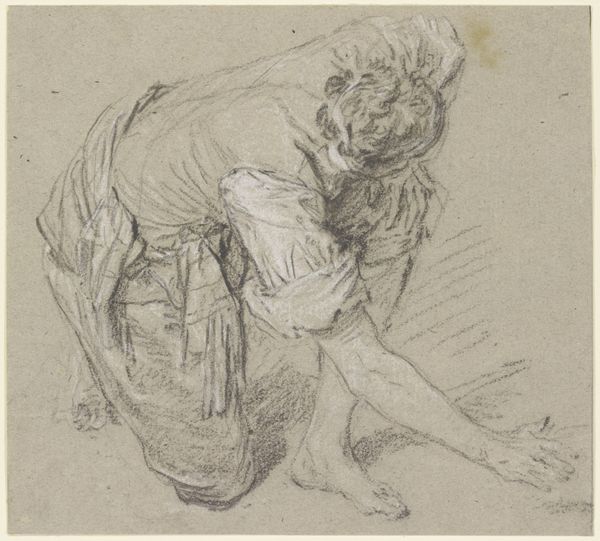
drawing, pencil
#
drawing
#
landscape
#
figuration
#
pencil
#
realism
Copyright: Public Domain: Artvee
Curator: I'm struck by how utterly present the figure in this drawing is; the concentration radiating off him feels almost tangible. Editor: Indeed. What we have here is "Man Mending Scythe," a pencil drawing created around 1862 by Charles François Daubigny. The rapid, sketchy quality belies, I think, the depth of its observation about labor and rural life. Curator: Absolutely. It's the posture, isn't it? The slight slump of his shoulders, the bowed head…He's so absorbed in his task, oblivious to us observing him. I wonder, did Daubigny see this man somewhere, and have to sketch him from a distance, quickly before he stood back up? I can feel how immediacy is so tied up in Daubigny's gesture. Editor: Perhaps. It aligns with the Realist movement emerging at the time, pivoting from idealized visions towards unvarnished depictions of contemporary life. Showing work not as heroic undertaking but ordinary labor. Even repairing your own tools... Curator: The hands are wonderful. Strong but weary, focused and skillful. I get a sense of his livelihood etched onto him – a portrait not just of a man, but of his work, and of the French land. He has to keep up the tool, so that he can keep up with his toil, to sustain his family. Editor: And in terms of audience and reception, depictions like these served a social purpose, forcing the burgeoning urban class of the time to consider those in the agriculture workforce and their experiences. It’s not just an innocent landscape drawing; it engages with debates around economic class and national identity. How and why images such as these got seen really dictated who had to meet a fellow countryman face to face. Curator: The hatching marks around the man also speak to how repetitive the act of scything must be. I want to feel what it is like to make the sharp steel kiss the waving grass... Editor: It really speaks to the value Daubigny placed on documenting the common man’s lot, while offering insight on life that isn’t necessarily always visible or given a platform. Curator: A humble subject, beautifully and sensitively rendered, reminds us of a quiet dignity often overlooked, doesn't it? Editor: A poignant moment of work immortalized, offering reflection on social and artistic values of its day, which are things to chew on today as well.
Comments
No comments
Be the first to comment and join the conversation on the ultimate creative platform.
